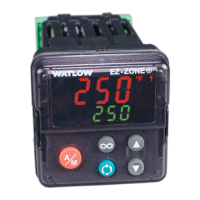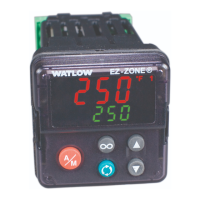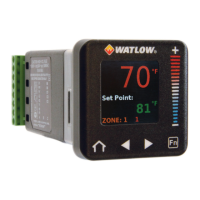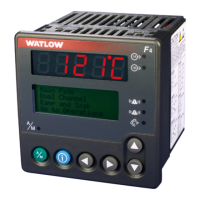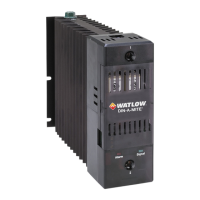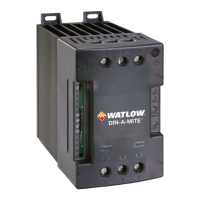Watlow EZ-ZONE
®
PMI Controller • 210 • Chapter 9 Features
Modbus - Using Programmable Memory Blocks
When using the Modbus RTU or Modbus TCP protocols, the PM control features a block of ad-
dresses that can be congured by the user to provide direct access to a list of 40 user cong-
ured parameters. This allows the user easy access to this customized list by reading from or
writing to a contiguous block of registers.
To acquire a better understanding of the tables found in the back of this manual (See Ap-
pendix: (Modbus Programmable Memory Blocks) please read through the text below which
denes the column headers used.
Assembly Definition Addresses
- Fixed addresses used to define the parameter that will be stored in the "Working Address-
es", which may also be referred to as a pointer. The value stored in these addresses will
reflect (point to) the Modbus address of a parameter within the PM control.
Assembly Working Addresses
- Fixed addresses directly related to their associated "Assembly Denition Addresses" (i.e.,
Assembly Working Addresses 200 & 201 will assume the parameter pointed to by Assembly
Denition Addresses 40 & 41).
When the Modbus address of a target parameter is stored in an "Assembly Denition Address"
its corresponding working address will return that parameter’s actual value. If it’s a writable
parameter, writing to its working register will change the parameter’s actual value. As an
example, Modbus register 360 represents the Analog Input 1 Process Value (See Operations
Page, Analog Input Menu). If the value 360 is loaded into Assembly Denition Address 90 and
value 361 is loaded into Assembly Denition Address 91, the process value sensed by analog
input 1 will also be stored in Modbus registers 250 and 251. Notice that by default this pa-
rameter is also stored in working registers 240 and 241 as well.
Note:
When modifying the Modbus Assembly registers, single register writes (function 06) are not
allowed. Multiple register writes (function 16) must be used to modify the assembly.
The table identied as "Assembly Denition Addresses and Assembly Working Addresses" (see
Appendix: Modbus Programmable Memory Blocks) reects the assemblies and their associated
addresses.
CIP - Communications Capabilities
With the introduction of the Common Industrial Protocol (CIP) a user can now collect data,
congure a device and control industrial devices. CIP is an open protocol at the application
layer fully managed by the Open DeviceNet Vendors Association (ODVA, http://www.odva.
org). Being that this is an open protocol there are many independent vendors offering a wide
array of devices to the end user. CIP provides the ability to communicate utilizing both im-
plicit messaging (real-time I/O messaging), and explicit messaging (information/congura-
tion messaging). For implicit communications using a PLC, simply congure the PM assembly
size into the I/O structure of the PLC (See: CIP Implicit Assemblie Structures). The assembly
structures can also be changed by the user. Explicit communications requires the use of
specic addressing information. DeviceNet requires that the node address be specied where
EtherNet/IP requires just the Class, Instance and Attribute.
• Node address or MAC ID (0 - 63, DeviceNet only)
• Class ID (1 to 255)
• Instance ID (0 to 255)
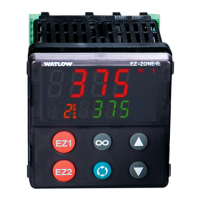
